A Brief Colonial History Of Ceylon(SriLanka)
Sri Lanka: One Island Two Nations
A Brief Colonial History Of Ceylon(SriLanka)
Sri Lanka: One Island Two Nations
(Full Story)
Search This Blog
Back to 500BC.
==========================
Thiranjala Weerasinghe sj.- One Island Two Nations
?????????????????????????????????????????????????Sunday, June 2, 2019
'Life is wonderful' being pain-free after 40 years
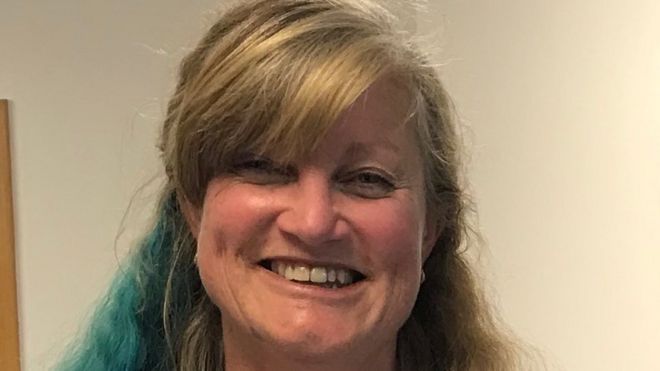
UNIVERSITY HOSPITAL SOUTHAMPTON Image captionAlison Cameron can't stop smiling now she's pain-free

By Frances Cronin-1 June 2019
Alison Cameron, from Dorset, was 17 when she had appendicitis and went into hospital.
"I had my appendix out and I remember I came round out of the anaesthetic screaming, the pain was something else."
It was the start of a "horrendous" three years of investigation before
"they came to the conclusion through a process of elimination, it was
nerve damage".
Over the next 30 years, Alison had more than 50 injections, known as
cryoblocks, to freeze the site of her abdominal pain, but none of them
stopped the pain for more than six months.
This left her needing high doses of painkillers which left her unable to
eat or drink - and she ended up on a feeding tube which led to her
losing weight, and her health deteriorating.
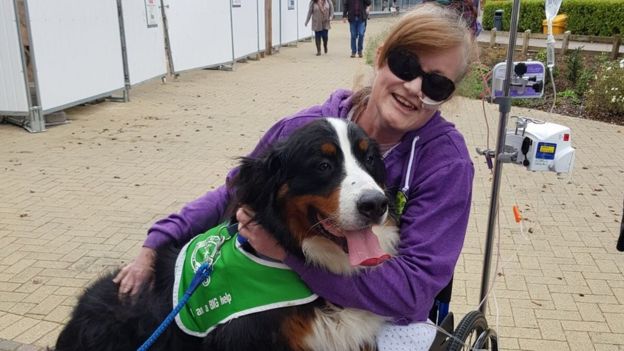 Alison Cameron with service dog Hendricks
Alison Cameron with service dog Hendricks
But she says she always tried to stay positive, which was instilled in her by her mum.
"No matter how bad things have been, I've always been able to find a
positive at the end of the day. That isn't saying that I didn't have
some very, very low moments.
"I miscarried seven times - six of which were definitely down to the
pain. So not only have I paid the price - but also those potential
lives."
She managed to have two children in the gaps between treatment, and now has three grandchildren.
The eldest burst into tears the first time she saw Alison without an eating tube, "as that, for her, wasn't normal granny".
- The woman who doesn't feel pain
- Hospital pain therapy 'life changing'
- How I've learned to live in constant pain
Five years ago, a cryoblock caused a collapsed lung, and Alison was
referred to consultant neurosurgeon Girish Vajramani at the University
Hospital Southampton.
"Alison is one of the most challenging patients I have ever known," he says.
"She had undergone 50 cryoblocks over 30 years, which is unprecedented,
and resulted in her referral to me when this proved too dangerous."
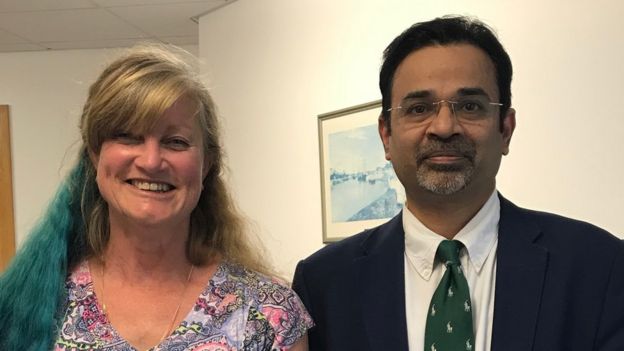
Alison Cameron says Mr Girish Vajramani never gave up on her
The team at Southampton fitted her with a stimulation implant along her spinal nerve, but it only reduced her pain by 50%.
Alison went on to have 20 procedures to implant further electrodes, as well as correcting leads which had moved out of place.
She also had to wear a body brace for two years to try to keep the leads in position.
With hyper-mobile joints, her body didn't make the right type of scar tissue to keep the electrodes in place.
Trying to cuddle her new twin granddaughters while wearing the body brace was one of her lowest points, she says.
After the medical team had exhausted all options available, they sought
opinions from around the world, but the options were limited.
In a last-ditch attempt to get rid of her pain, Mr Vajramani inserted a
paddle implant, combined with a spinal cord stimulator, to create a
hybrid model.
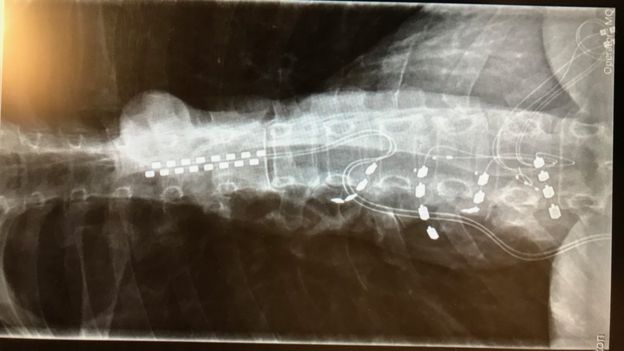
The procedure involved placing four paddle-shaped electrodes across
small collections of nerves in the spinal nerve known as the dorsal root
ganglion (DRG), combined with a standard spinal cord stimulator
They were implanted in two operations in December 2018.
"When they turned on the devices and they all worked, I don't know who
had the biggest grin on their face - them or me," Alison says.
Within five weeks she was off of all her pain medication.
"I can't quite believe it and I can't believe what they did to get everything sorted," she says
"I still can't stop grinning. I'm going around with a permanent Cheshire cat grin on my face because I just cannot believe it.
"Because I was a 17-year-old, and now I'm a granny."
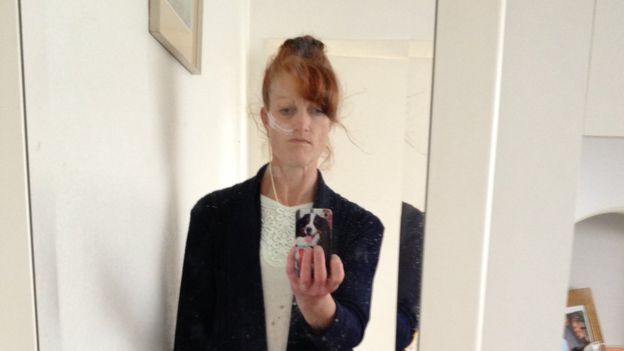
Alison Cameron in 2017
Now 56, she says "life is wonderful" being pain-free, as she is finally
"able to eat and drink and enjoy the social side of life".
And she hopes her story can "give hope to others that no matter how long you face adversity, things can get better".
She has a low-level buzz in her body and has to charge herself up twice a
week by holding two different discs to parts of her body.
"It's a standing joke that granny has to charge herself and there have been jokes about bionic granny," she says.
After the procedures she was able to have her first Christmas dinner in
five years: "It was just a little one, but this Christmas I'm going to
have an enormous one," she says, laughing.
